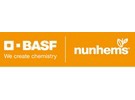In order to not get chlorosis problems, the tomato plant needs at least six hours of light per day. This is a well-known fact for growers, but is there also a maximum of light hours per day the crop can take? It would be good to know, for instance when the grower wants to give his cultivation a little boost come Christmas time.
A variety of young plant material from different tomato varieties was subjected to a lighting test last season in which the SON-T-lighting above the crops remained on for as long as possible. The results showed that none of the varieties tested were able to take in more than 20 hours of light a day. There is no information given about the possibility of additional production (yet) because this is not something that was tested for. It is hypothesized. However, that extra light enhances the flavor of the tomatoes. The next test is meant to shed a light on this hypothesis.
One of the first varieties tested was the Provine, which is at the center of the ‘Project ProVine 20 hour lighting’. “Out of all the varieties that were tested, the Provine, a variety that in terms of fruit weight sits between the large vine and middle vine, tolerated light the best for up to 20 hours”, says Erwim de Kok. Besides the Provine, a Nunhem variety was tested for comparison, as well as the vine cherry variety Adorion and an experimental variety from a different breeding company.
Follow-up test
The results are very useful for the breeding company and Plant Lighting, which was in charge of the lighting and photosynthesis measurements during the test. By now, a follow-up test has begun in the 500 square meter testing greenhouse of BASF Vegetable Seeds in the Dutch town of ’s-Gravenzande. At the start of October, the plants were put in the greenhouse, among which again were the Provine and the Adorion.
This time the test will involve larger plants seeing as in the previous test, which lasted six weeks, young plants were involved. Growers want to know how a grown-up plant responds, which is what the research hopes to answer in the first week of 2020.
For more information:
BASF Vegetable Seeds
www.nunhems.com
Erwin de Kok
Sales Specialist Tomato Netherlands
+31 6 144 27 646
[email protected]
